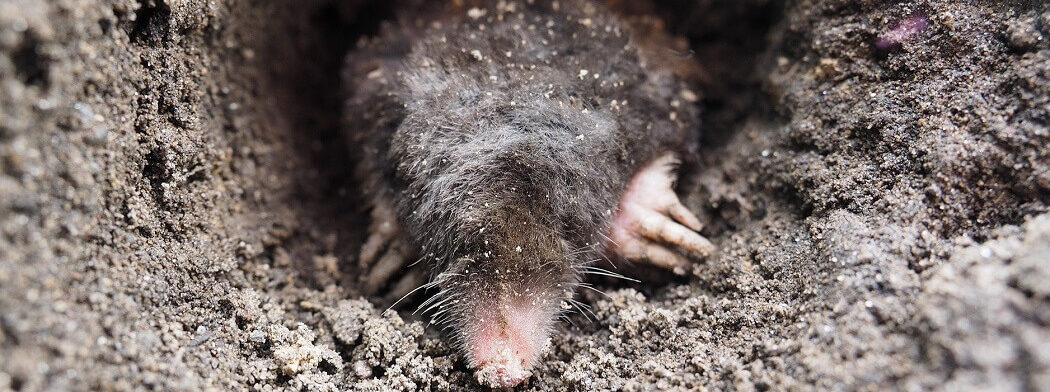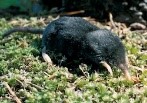
What Does a Shrew Mole Look Like?
Facts
Known for being the smallest species of mole in North America, shrew moles only grow to be four inches long. They are easily mistaken for shrews because they lack the typical large forelegs of other mole species. Shrew moles also have extremely small eyes and lack external ears. Active throughout the day and night, shrew moles must eat constantly to keep up with their rapid metabolism, sometimes consuming nearly double their body weight in food each day. Their diet consists of earthworms, insect larvae, slugs, and centipedes.

Identifying Features
Unlike other species of moles, whose forepaws are situated sideways to help with digging, shrew moles can place their front feet flat on the ground. This allows them to be more agile and to climb low bushes in search of food and places to nest. Shrew mole claws aid in the digging of tunnels that run along the surface of the ground directly under leaf litter. The exits to shrew mole tunnel systems are typically less complex than those of standard mole species and do not resemble characteristic “mole hills.”
Habitat/Region
American shew moles are found from mid-California to the southern cities in British Columbia. Though they prefer the temperate rainforests of the Pacific Northwest, they can also survive in the higher elevations of the Cascade and Sierra Nevada mountain ranges. Shrew moles typically inhabit ravines, as they favor the soft soils found along stream banks and riverbeds, so long as there is enough dense or brushy vegetation in the area to use for cover.
Learn more about mole removal.
Get them out.
Keep them out.®
Experiencing a wildlife or pest issue? We can help! Complete this form and your local Critter Control® office will contact you to assist.
- How to Get Rid of Moles in Your Yard
- Moles in the Garage
- Moles in the House
- Mole Trapping
- Moles in the Basement
- Moles in the Garden
- How to Identify Moles in Yard
- Moles vs. Voles
- Do Moles Bite?
- Do Moles Carry Disease?
- Eastern Moles
- Hairy-Tailed Moles
- Mole Hills
- Mole Repellent
- Mole Tracks
- Star-Nosed Moles
- Types of Moles
- Mole Diet
- What Is a Mole?
- Damage Caused by Moles
- Mole Identification
- Mole Droppings
- Mole Appearance